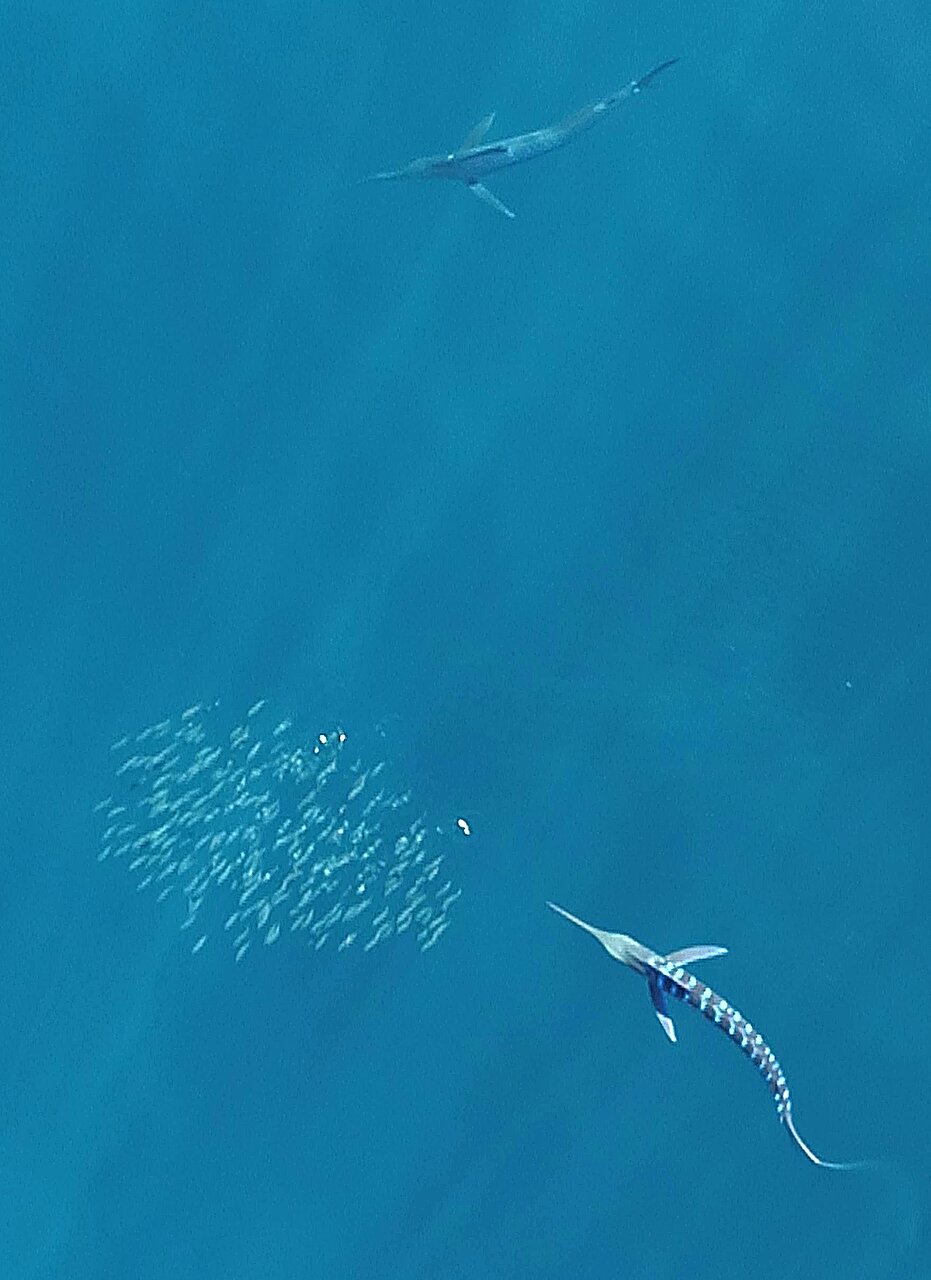Striped marlin are some of the fastest animals on the planet and one of the ocean’s top predators. When hunting in groups, individual marlin will take turns attacking schools of prey fish one at a time. Now a new study reported in the journal Current Biology helps to explain how they might coordinate this turn-taking style of attack on their prey to avoid injuring each other. The key, according to the new work, is rapid color changes.
“We documented for the first time rapid color change in a group-hunting predator, the striped marlin, as groups of marlin hunted schools of sardines,” says Alicia Burns of Humboldt University in Berlin, Germany. “We found that the attacking marlin ‘lit up’ and became much brighter than its groupmates as it made its attack before rapidly returning to its ‘non-bright’ coloration after its attack ended.”


